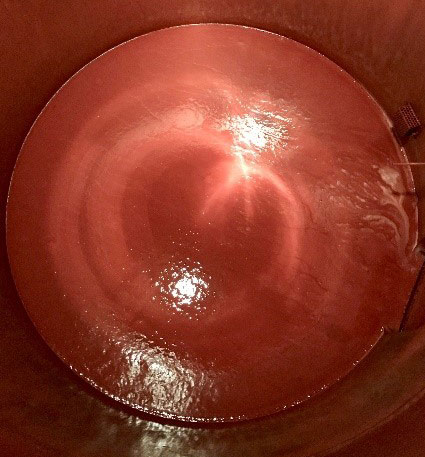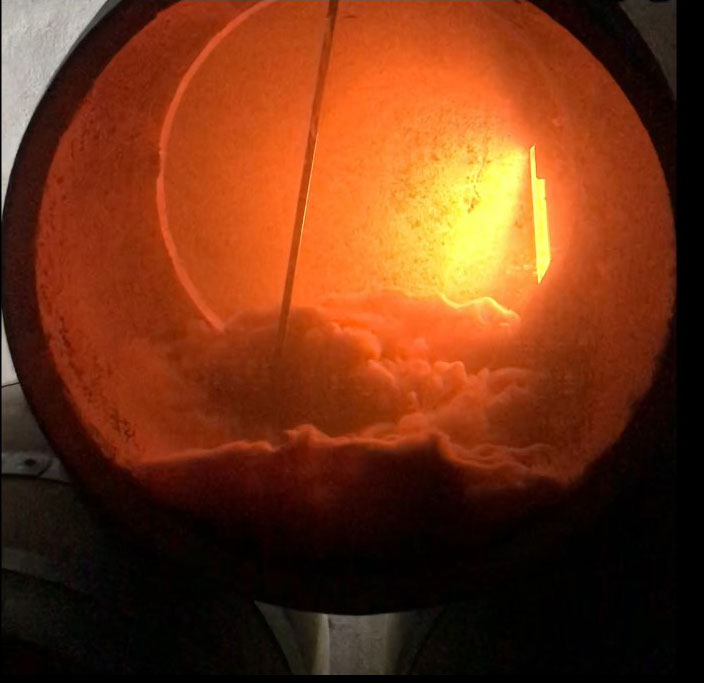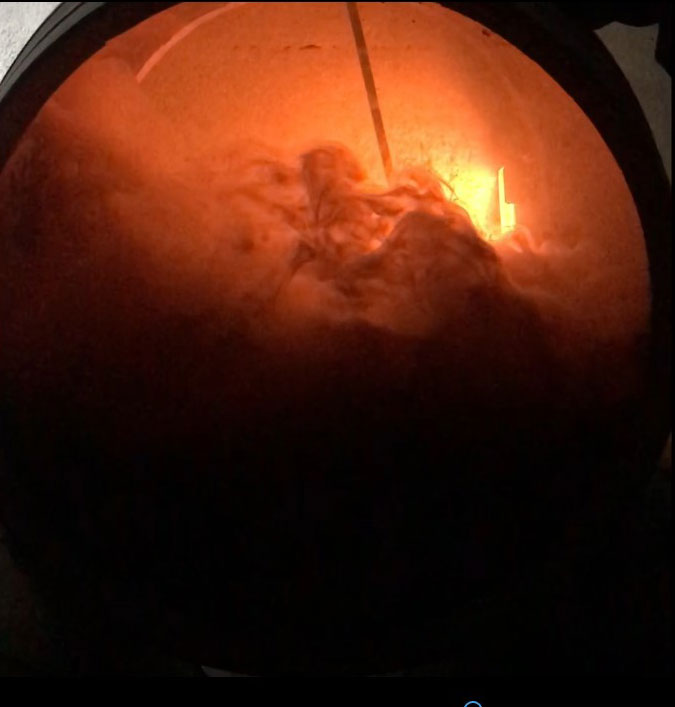1- The Lees
The lees are composed by dead yeasts, that settle a deposit at the bottom of the container after the alcoholic fermentation.
The lees are very important because it present a natural antioxydant capacity, that allows, at the same time, to protect the wine during the ageing and to improve its capability age properly.
2- Ageing on the lees
Ageing in oak barrels
For a « classic » ageing, the wine is racked after the alcoholic fermentation. That means the wine is changed of container, the lees stay at the bottom of the vat.
The winemaker can choose a full ageing on lees (all the lees are kept, same the the thickerparticles) or an ageing on fine lees.
In our cellar, we choose for a complet vinification (alcoholic and malolactic fermentation and ageing) into one and the same recipient, the oak barrel.

Lies of rosé
It could be made in inox vat, in oak barrel or in the bottle ( used for sparkling wine only, in this case the term of ageing is used)
To notice : the ageing on lees is not systematic. Its depends on the quality of wine that the producer researche.
Ageing on lees in bottle
The ageing is, for all the wines, a source of enrichment. It is truer for the champagne, because one of the originalities of the Champagne process is a long time ageing in bottle on the lees (the yeasts of the second fermentation : the famous Prise de mousse champenoise).
3- Autolysis
Autolysis is one of the fundamental processe. It is this combination of techniques and skills that ensures the consistent quality of wines.
The yeast cells gradually die and decompose, forming the lees that slowly enrich the wine with amino acids, proteins and volatile constituents. They also give the wine its complexity and add finesse to the bubble.
4- Stirring of the lees in a barrel
This technology improves the effects of the ageing on lees, causing the resuspension of particules.
By this way, it do not stay at the bottom, and it mix easier with the wine.
Very popular in Burgundy, it is less used in Champagne.


Lees
5- Time
The time of the ageing on lees during vinification is very variable, its depends on the wine researched and the wine area.
Our wine of champagne, for example, stay around nine months in oak barrels with lees.
To notice : A long time ageing or a ageing on unhealthy lees (impaired grappes) can give rotten egg aromas (reduction).
The time of ageing on the lees depends on the quality researched and the imperative economics.
The rules governing the Champagne Appellation stipulate a minimum cellaring period for Champagne before release. This ranges from 15 months for non-vintage wines to three years from the date of bottling, for vintage wines.
In practice, most winemakers leave their wines to age for much longer than the minimum periods required by law.
Our vintage champagnes stay minimum from 5 to 6 years before it is released and up until 20 years for our legend range.





